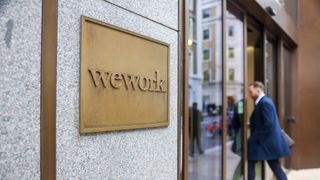WeWork is back — but there’s a catch
WeWork will make a triumphant return, but with a far smaller real estate portfolio after shedding dozens of unprofitable locations

WeWork has returned from the brink after declaring bankruptcy late last year, with the firm touting a new CEO and plans for numerous locations.
The firm has now emerged from Chapter 11, the legal declaration of bankruptcy, after a process of global restructuring which has seen the firm revamp both its finances and operations.
The company unveiled a new board of directors as part of the move, with commercial real estate executive John Santora set to head the company as its CEO, replacing previous CEO David Tolley.
Much of the firm’s restructuring took place under Tolley’s tenure, however, with the ex-CEO having worked to renegotiate over 190 leases and exiting over 170 “unprofitable” locations in a bid to correct the size of WeWork’s real estate portfolio.
This helped to reduce annual rent and tenancy expenses by over $800 million, as well as total future rent expenses by over $12 billion.
“I’m delighted to have had the opportunity to lead our unique, incredible company into and out of this remarkably successful, transformational restructuring,” Tolley said.
“We cut our future lease obligations in half, shed billions of dollars in debt, raised $400 million of additional equity capital, and are now positioned for long-term growth and profitability,” he added.
Get the ITPro. daily newsletter
Receive our latest news, industry updates, featured resources and more. Sign up today to receive our FREE report on AI cyber crime & security - newly updated for 2024.
A fresh start for WeWork
Now Santora takes the helm at the beleaguered office space company, having previously been the tri-state chairman for Cushman and Wakefield where he spent over 40 years. Santora appears optimistic about WeWork’s future, suggesting that the firm is well-positioned to capitalize on flexible working trends.
“I firmly believe that flexible work is no longer just an option, but rather a strategic imperative for companies wanting to maximize the efficiency of their real estate footprint, as well as their dynamic workforce,” Santora said.
“While there is much work to do, with these supportive, structural trends, and a restructured organization in place, I could not be more confident in our future and I am energized and excited by the challenge that lies ahead,” he added.
WeWork has had a tumultuous history
Prior to officially filing for bankruptcy in November 2023, WeWork had dealt with a string of problems that knocked its profitability and ultimately forced its hand.

It had originally been valued at $47 billion with locations in over 30 countries, but a disastrous initial public offering (IPO) devalued the company by billions over a matter of years.
Key to WeWork’s demise was a dwindling demand for office space amid the COVID pandemic, which saw a huge uptick in remote work that had a negative impact on WeWork’s business model.
SEC filings in August 2023 seemed to confirm a bleak outlook for the firm, with the company warning of “losses and negative cash flows” that raised “substantial doubt” over its operational future.

George Fitzmaurice is a staff writer at ITPro, ChannelPro, and CloudPro, with a particular interest in AI regulation, data legislation, and market development. After graduating from the University of Oxford with a degree in English Language and Literature, he undertook an internship at the New Statesman before starting at ITPro. Outside of the office, George is both an aspiring musician and an avid reader.



